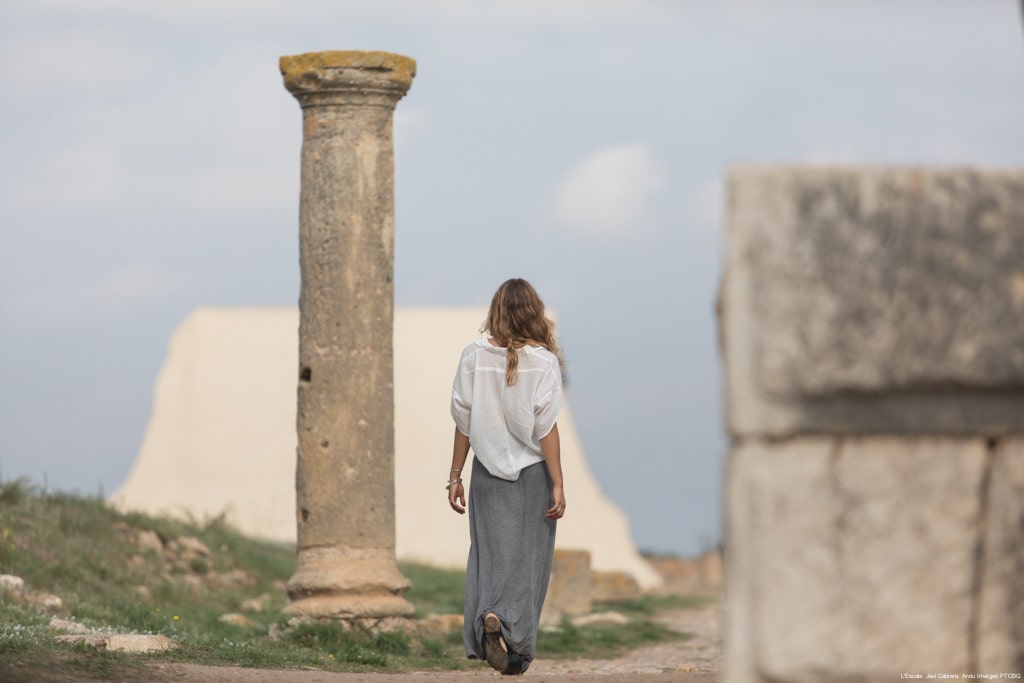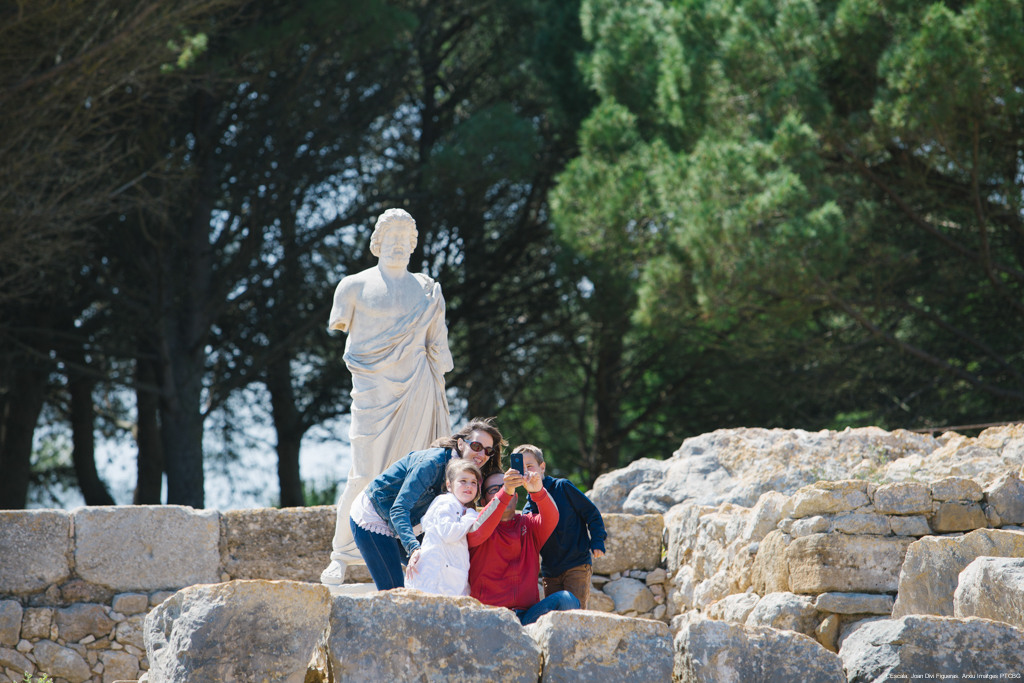The Costa Brava and the Pyrenees are a territory rich in culture and tradition, thanks to the passage of the many civilisations which have left their mark on the ways of life here over the course of history. Two of the most important were Ancient Greece and Rome, which left an important legacy that can be relived in the Ruins of Empúries.
Located in an exceptional setting overlooking the sea, the town of Empúries is considered the gateway of the Ancient Greek and Roman cultures in Catalonia.
Shaped over ten centuries, the Ruins of Empúries form an archaeological site unique to the entire Iberian Peninsula, due to the discovery of the remains of two civilisations which existed here at different times in history. The remains found in Empúries are those of the ancient Greek city of Emporion and the Roman city Emporiae.
This peculiarity is not the result of chance. The location of Empúries was key to the foothold gained by these civilisations in the region. It is the proximity to both the sea, which allowed for the expansion of their trade routes, as well as inland, where they found ideal allies in the area’s Iberian villages, which produced highly valuable goods at that time, like pottery and wine.
The contact of the Iberians with the Greek and Roman civilisations marked the way of life and the character of the population which, even today, still reflects some of the traditions that were founded at that time.

The Ruins of Empúries are the opportunity to relive an exciting journey through time – back about two thousand years – which will let you discover how the ancient Greek and Roman civilisations developed.
During the visit to the site of the Ruins of Empúries you will be able to see:
Walk the streets of Emporion and discover the life, customs and character of the Greek civilisation that decided to settle along this stretch of the Costa Brava.
Along the way, you will be able to visit the most prominent parts of the city, such as the Agora, the public square, epicentre of city life and location of the social, economic and political heartbeat of the city; the Southern Wall, the protective and defensive structure built in case of possible enemy invasion; the Asklepieion, a therapeutic and religious centre dedicated to the god of medicine Aesclepius; and many others that will transport you back in time to an ancient Greek city.
Relive the landing of Roman troops on the shores of Empúries in 218 BC on the occasion of the Second Punic War. Discover the first Roman camp in the Iberian Peninsula and the embryo of what would later become an important city and strategic trade centre of this civilisation.
During the visit, you can also stroll through the most important sites of the city of Emporiae, such as the Public Baths, the Forum, the Tabernae, the Domus of the Mosaics, and much more!
Throughout the year you can see, at the Empúries site of the Museum of Archaeology of Catalonia (MAC) the important collection “Treasures of Empúries” with findings from the archaeological digs and research carried out at the Ruins of Empúries, making a perfect complement to your visit.
This exhibition shows labelled objects from six periods of human history: the indigenous world, the one before the arrival of the Greeks; the founding of the emporium and life in the Greek city; the arrival of the Romans and the founding of the new city; and finally, the crisis and reconversion of Empúries during the late Roman period.

The Ruins of Empúries provides all kinds of tours suitable for all visitors.
The MAC offers free tours, guided tours and theatrical tours, which recreate the lives of the ancient inhabitants of Empúries.
The opening hours of the Empúries Ruins Site vary on the season. During the summer months, the opening hours run from 10 am to 8 pm and during the off-season, it is usually open from 10 am to 5 pm.
On the other hand, the price of the general ticket is € 6 and the reduced ticket is € 4.
You can check all the details of the tours, schedules and conditions for each type of ticket on its website.
To know the origins of Empúries, we must travel back in time, to the sixth century BC, to a small island in the Gulf of Roses, where the Ancient Greeks established their first settlement, also known as “Polis Beach”, the old city. Later, the city moved to the mainland and founded Neapolis, the new city.
Later, in 218 BC, Roman troops used the port of Empúries as a gateway to the Iberian Peninsula to fight the Carthaginian army in its conquest, and later settled there, where it became the first Roman camp on the Peninsula, which over time, became a prosperous and important Roman town.
Thus, it goes without saying that both the Greek city of Emporion, and later the Roman city of Emporiae, were key points for both civilisations and the locals who inhabited the territory. At present they constitute an ideal example for understanding the evolution of Ancient Greek and Roman cities in the late Republic period, and their later transformation during the imperial epoch.
If you are in the area, you can’t miss a visit to the Empúries Ruins and the historical and monumental legacy of this site, classified by UNESCO as one of the most emblematic in the world.

To reach the Empúries Ruins site, you leave from your starting point towards L’Escala-Empúries, or using the SARFA bus service (Check availability on its website).
📌 Exact location of site of the Ruins of Empúries.
The Ruins of Empúries does not have its own parking. The option given to the visitor is to use the public car parks in the area, or enjoy the discount on the entry to the site for the Hostal Empúries car park next to the museum.
Per a més infFor more information, you can contact the MAC.